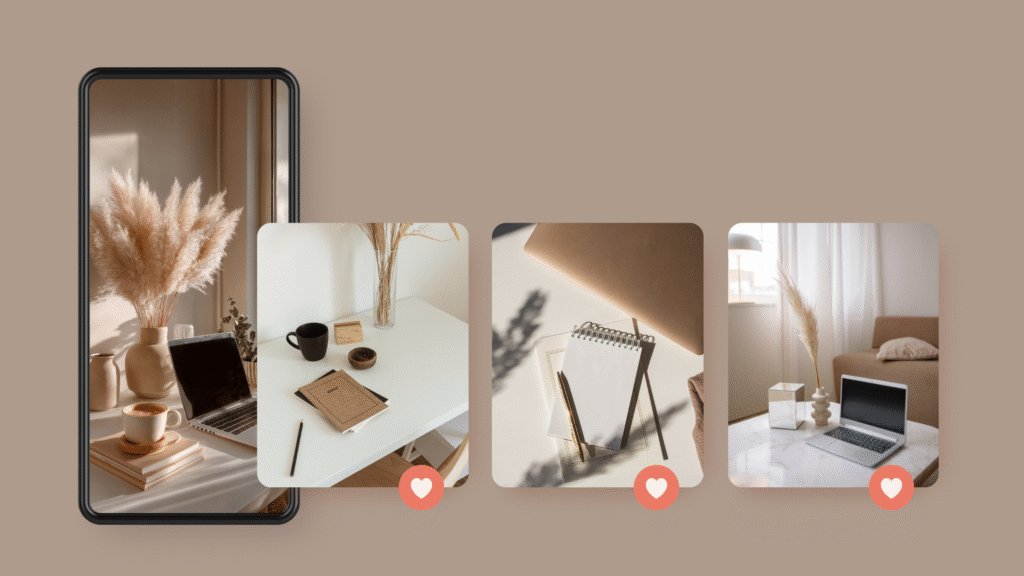The truth is, not every brand will say yes. And that’s completely normal. In fact, when pitching, the majority of responses you’ll get are “not right now” or silence. Knowing how to handle these different responses is what makes the difference to land consistent partnerships.
Why Following Up Matters
You might think their silence means ” no”, but brands are busy. Your email could be sitting in a full inbox, opened but forgotten, or waiting on team approval. Following up isn’t annoying – it shows you’re serious and professional. Sending a follow-up email is giving your pitch a second chance to be seen.
When to Follow Up
It’s been a couple days since you’ve sent your pitch and you’re probably wondering why they haven’t responded. Now you’re trying to figure out if it’s too soon to follow up. These are my tips for following up after your pitch:
- Wait at least 5-7 days before sending the first follow up.
- Make 2-3 attempts to follow up. I space my second and third attempt by 2-3 days apart.
- Change the messaging in each follow up. Don’t copy paste the same email.
- If you don’t hear back after your final follow up attempt, move on.
Following up is a normal part of pitching brands. Don’t be discouraged if it takes more than a few follow ups to hear back.
Example Follow Up Templates
Here are some examples of how I follow up for each attempt.
First Attempt:
Hi [brand or contact name], I wanted to follow up on my email from last week about potential UGC opportunities. I’m super excited to partner with [brand name] and would love to find a way to make it work. Please let me know if this is something you’re open to discussing.
Second Attempt:
Hi [contact name], I just saw [brand name]’s recent [i.e. IG or TT post, LinkedIn post, email] and really enjoyed it. Love how you [reason you liked the post].
I’d love to collaborate on a similar post about [content idea]. Any chance you’d still be up for working together?
Third Attempt:
Hi [contact name], I wanted to take a moment to reach back out because [give a reason now is a good time – i.e. traveling and want to feature product, or locking in holiday brand collabs by x date].
I’m still interested in partnering and would love to find a way to make it work. Please let me know!
How to Handle Responses
Every pitch you send will get one of three responses: yes, maybe, or no. Here’s how I navigate each scenario:
What to do when a brand says yes!
A “yes” often comes in the form of curiosity. The brand is interested but needs more info before moving forward. This is when you start to share the details and offer a collaboration they can’t refuse!
Response 1: “Can you send us your rates?”
- What this means: The brand is interested but want to see if your rates align with their budget.
- How to reply: I always try to gain more information first before sending a rate. You can also send your rate upfront but I find leading with a rate card often leads to a “sorry, you’re too expensive” response.
- Example response: “Can you share a bit more about what you’re looking for? I’m happy to put together a custom package based on your goals.”
Response 2: “Can you tell us more about your ideas?”
- What this means: The brand wants to get a better idea of your experience, creativity, and what you want out of this potential partnership.
- How to reply: I recommend reviewing their top performing post in recent months and share an idea that aligns well with their brand voice. I might also link to my top performing post and offer to create something similar featuring their product.
- Example response: “I think [explanation of idea] would perform well because of [include the why]. Let me know if this sounds like something you’d like to partner on! I’m happy to send my rates or build a custom package based on your needs.”
Response 3: “We’d love to collaborate! We have an upcoming campaign you’d be a good fit for. Would you be interested?”
- What this means: They already see you as a strong candidate and need to confirm logistics. This is when to ask important questions about deliverables, timelines, usage rights, and rates!
- How to reply: Again, share your availability, ask about timelines, and get clarify on deliverables and expectations.
- Example “Yes” response: “I’m so excited to learn more about this opportunity. Can you tell me more about the timeframe and what deliverables you’re looking? That allows me to build a custom partnership package that aligns with this project.”
What to do when a brand says maybe or not right now
Don’t be discouraged by a maybe! A maybe can still lead to a deal in the future.
Response 1: “We’re not running campaigns this quarter, but we’ll keep you in mind.”
- What this means: They like you but may already have partners lined up for their current or upcoming campaigns.
- How to reply: Thank them warmly and ask when the next open opportunity might be. I write myself a reminder to follow up with the brand next quarter.
- Example response: “Thanks so much for getting back to me! Partnering with [brand] would be a dream. I’d love to stay in touch and reach out again. When might the next opportunity be?”
Response 2: “We tend to do product trade for our partnerships.”
- What this means: They either don’t have budget allocated or they’re testing interest. Unfortunately, there are a lot of creators willing to say yes to brands in exchange for free product. I strongly recommend you evaluate your goals as a creator.
- Reasons to say yes:
- If you’re just starting off, saying yes to a few product exchange collaborations can be good for building your portfolio.
- If you pitched to a small business, often times they will not have the budget to pay for UGC. If it’s a small business you love and want to promote, I’d ask if they have an affiliate program instead.
- Reasons to say no: Creating good UGC takes a lot of time and planning. Don’t say yes for less than what you deserve. If the product value, rate, and content agreement is not fair to both you and the brand, it’s better to politely decline and express interest in future paid campaigns.
Response 3: “We’d love to collaborate but your rate is too high”
- What this means: They want to work with you but can’t afford your rates.
- How to reply: There are two responses you can offer.
- Negotiate: This is how I typically respond in this scenario. I often will propose a scaled-down version of my usual package that works within their budget (if they shared one) or at a discounted rate. For example, they asked for a 30sec video and 3 stories. I might suggest a single post or only the 3 stories instead
- Reaffirm your rate (no to lower rates): Thank them for the opportunity and kindly ask them to keep you in mind for future campaigns with a budget.
What to do when a brand says no
Don’t let a ‘no’ discourage you from pitching to other brands. These responses happen often and for a number of reasons. Here are some typical responses you might get from brands:
- The brand isn’t investing in UGC right now
- Their creator roster is full at the moment
- You’re not the right fit for their current target audience
Responding to a No
Start by thanking them for their consideration and let them know you’d be happy to reconnect if things change in the future. A no now doesn’t mean a no forever.
Don’t Take it Personally
Reject (or silence) does not mean you’re not talented! It usually means the budget, timing, or alignment isn’t there. Remember: pitching is a numbers game. Consistency and resiliency is what builds results.
I always try to evaluate a brand’s reason for saying no. If they claim I’m not a right fit for their target audience, I review my portfolio and consider ways I can improve it.
Week Four Challenge: Follow Up, Follow Up, Follow Up
Here’s how to make the most of this week:
- Regularly check your inbox for responses
- Update your outreach tracking list (from week 3)
- Use the tips above to craft thoughtful replies or follow-ups if you haven’t heard back
- Continue to update your outreach tracker
What You’ll Gain This Week
By the end of Week 4, you’ll:



Final Thoughts
You did it – four full weeks of planning, building, pitching, and following up. By now, you’ve sent real pitches, tracked your outreach, and started navigating responses that come with putting yourself out there. That alone puts you ahead of so many creators who never take the leap.
This challenge wasn’t just about holiday campaigns – it’s about giving you a repeatable system you can use year round. Pitching gets easier the more you do it, and now you have the confidence, tools, and mindset to keep growing.
If you walk away with one reminder, let it be this: every “no” brings you closer to a “yes”. The opportunities you’re looking for don’t show up by waiting, they come from showing up.
I can’t wait to see the partnerships you land from here. If you want extra support? Join the Instagram channel where I regularly check-in and answer your questions in real time.

